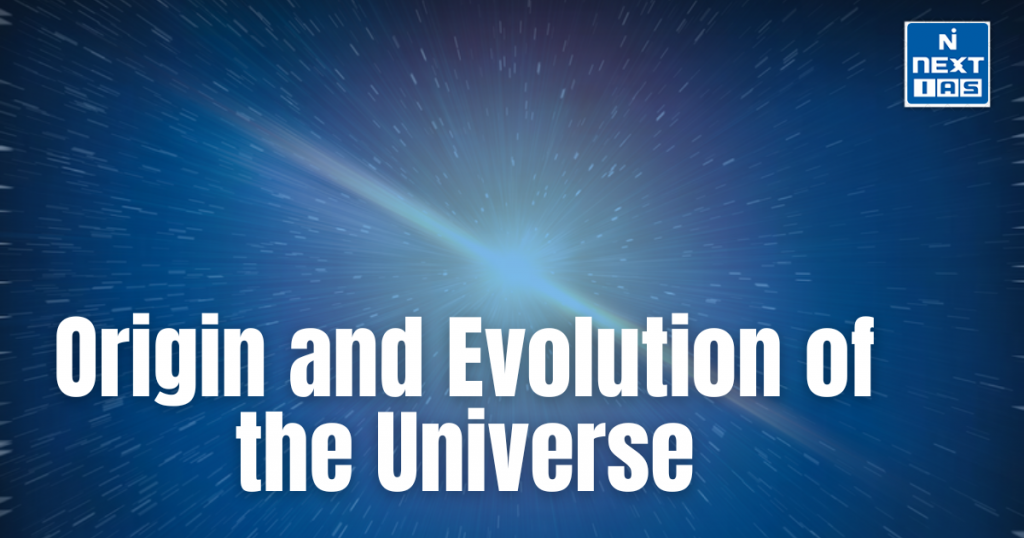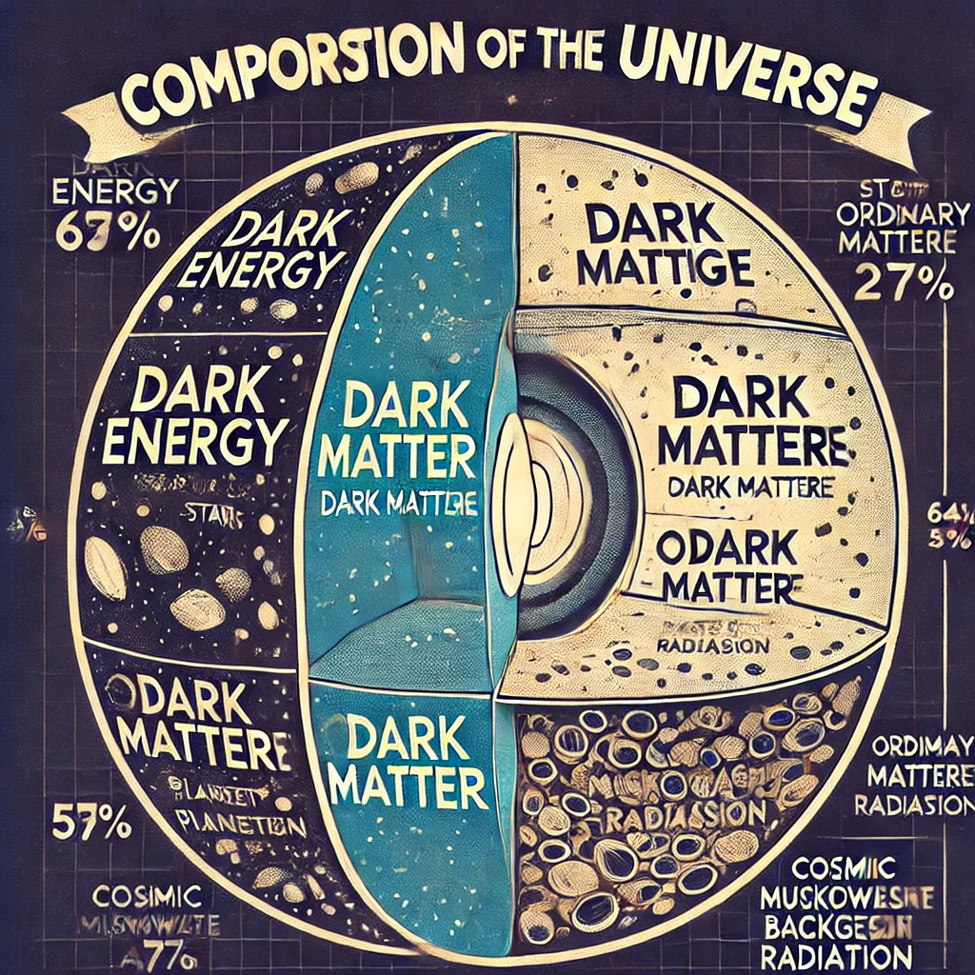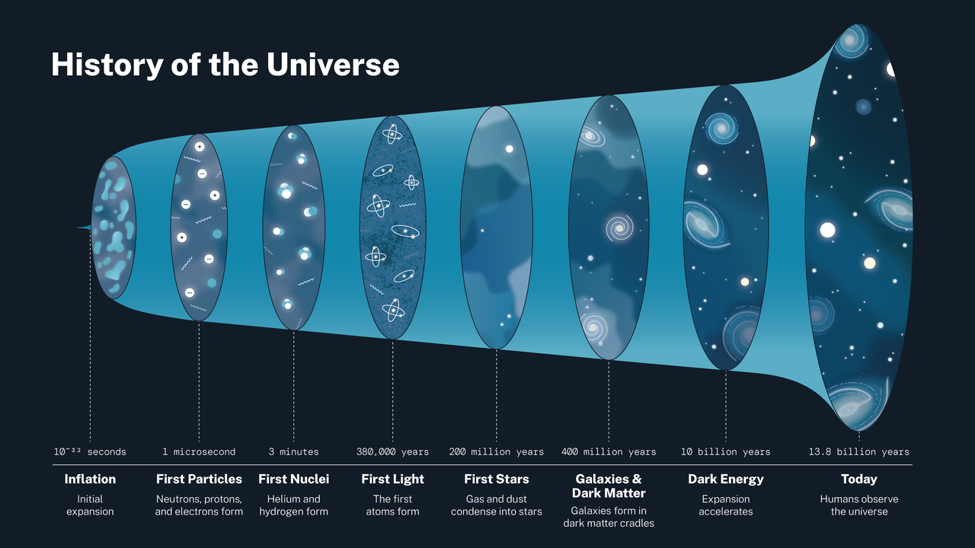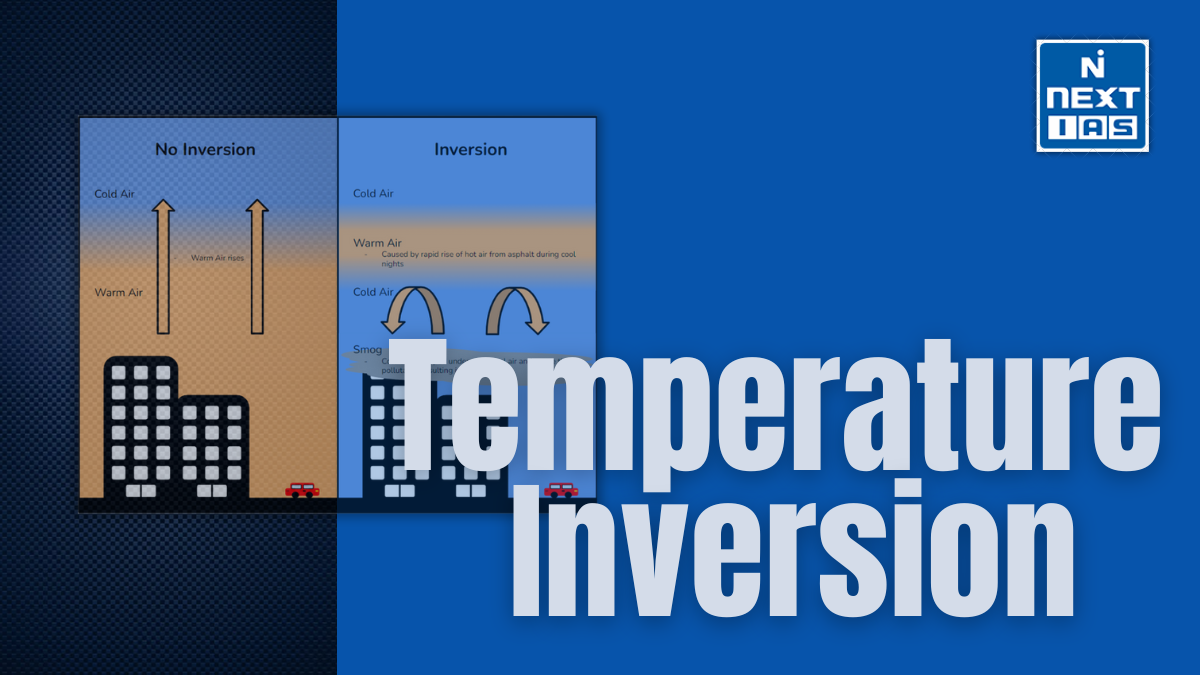
The origin and evolution of the universe explore the formation and development of everything from the Big Bang to the present day. This scientific inquiry delves into the birth of matter, galaxies, stars, and planets, seeking to understand cosmic phenomena and the forces that shaped the universe’s vast expanse.
About the Origin and Evolution of the Universe
- The origin and evolution of the universe is explained through the Big Bang Theory, which suggests that the universe began around 13.8 billion years ago from a singular, infinitely dense point.
- Initially, the universe was a hot, dense plasma. As it expanded rapidly in an event called cosmic inflation, it cooled, allowing particles to form. Over time, these particles combined to create atoms, leading to the formation of stars and galaxies.
- Galaxies began to cluster, and gravitational forces shaped their structures. The evolution of stars involved nuclear fusion, producing heavier elements that were later dispersed into space during supernovae, enriching the cosmos with building blocks for planets and life.
- The universe continues to expand, as discovered by astronomer Edwin Hubble in the 1920s.
- Dark energy, a mysterious force, is accelerating this expansion. The study of the universe’s origin and evolution is ongoing, with breakthroughs in cosmology providing deeper insights into its vast history.
Composition of Universe
The composition of the universe is diverse, consisting of matter, energy, and various cosmic structures. Here’s a breakdown of the main components:
Ordinary (Baryonic) Matter
- Stars and Planets: The visible matter in the universe, including stars, planets, moons, and asteroids, is made up of atoms, primarily hydrogen and helium.
- Nebulae: Clouds of gas and dust, often the birthplaces of stars.
- Galaxies: Vast collections of stars, gas, and dust bound together by gravity.
This type of matter makes up only about 5% of the total content of the universe.
Dark Matter
- Invisible and Mysterious: Dark matter does not emit, absorb, or reflect light, making it undetectable by electromagnetic radiation.
- Gravitational Influence: It exerts gravitational effects on galaxies and clusters of galaxies, contributing to their motion.
- Constitutes 27% of the universe’s total mass-energy content.
Cosmic Microwave Background Radiation (CMB)
- A faint glow left over from the Big Bang, providing a snapshot of the early universe and evidence of its initial hot, dense state.
Cosmic Structures
- Clusters and Superclusters: Galaxies are organized into clusters, and clusters form larger structures known as superclusters.
- Void Spaces: Large regions of the universe with very few galaxies, known as cosmic voids.
Thus, the universe is primarily composed of dark energy, dark matter, and a small fraction of ordinary matter, with ongoing research aimed at better understanding these components.


Significance of Study of Origin and Evolution of Universe
The study of the origin and evolution of the universe is a cornerstone of modern science, providing profound insights into our existence, the laws of nature, and the ultimate fate of the cosmos. Its significance can be understood from multiple perspectives:
Understanding Fundamental Laws of Nature
- The study of the universe’s origin, such as through the Big Bang theory, reveals fundamental physical laws, including gravity, quantum mechanics, and thermodynamics.
- It helps unify our understanding of how matter, energy, space, and time interact on both the cosmic and microscopic scales.
Cosmic Perspective on Our Existence
- Tracing the universe’s history provides context for humanity’s place in the cosmos.
- It connects the origins of galaxies, stars, and planets to the processes that led to life on Earth, giving a sense of unity in the natural world.
Technological Advancements
- Research in cosmology drives innovation in technology, such as advances in telescopes, satellite technology, and computational models.
- These tools often have broader applications, influencing industries like medicine, communication, and environmental monitoring.
Origins of Matter and Life
- Understanding stellar evolution and nucleosynthesis explains how elements necessary for life, like carbon and oxygen, were formed.
- It sheds light on the conditions necessary for life, informing the search for extraterrestrial life and habitable planets.
Philosophical and Cultural Impact
- Exploring the universe’s origins encourages reflection on profound questions about creation, existence, and destiny.
- It enriches human culture, inspiring art, literature, and a deeper sense of curiosity and wonder.
Predicting the Future of the Universe
- Studying cosmic evolution provides clues about the universe’s fate, such as its potential expansion, contraction, or heat death.
- This knowledge informs theoretical scenarios about the long-term future of matter and energy.
Interdisciplinary Integration
- Cosmology integrates insights from physics, mathematics, astronomy, chemistry, and philosophy, fostering a holistic understanding of the universe.
Way Forward
- The origin and evolution of the universe can be explored through scientific theories like the Big Bang, which posits that the universe began 13.8 billion years ago from an initial singularity.
- Observations of cosmic microwave background radiation and expanding galaxies support this theory. Evolution involves processes like nucleosynthesis, galaxy formation, and star life cycles.
- Dark matter and dark energy shape its structure and fate. Advancing knowledge requires cutting-edge observations, computational modeling, and collaboration across cosmology, astrophysics, and quantum physics.
Conclusion
The origin and evolution of the universe, from the Big Bang to its current state, reflect a journey of cosmic expansion, star formation, and the emergence of life. Governed by fundamental laws of physics, the universe continues to evolve, offering insights into its mysteries and humanity’s place within it.






